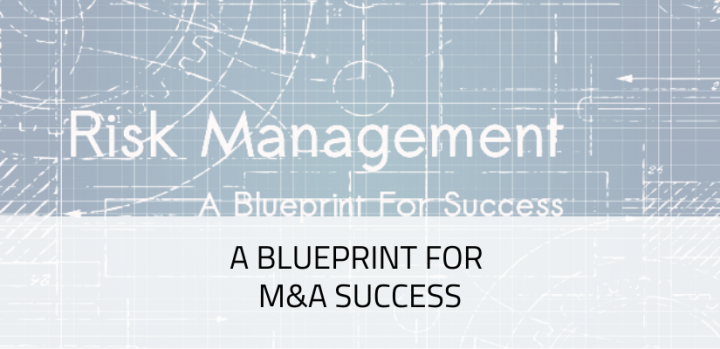Programmatic mergers and acquisitions (M&A) can help companies build resiliency, but this approach to deal-making requires a solid game plan – one that will guide proactive deal sourcing and opportunistic deal evaluation.
Large M&A tend to get the biggest headlines, but, executives should be paying attention to all the small deals, too. These smaller transactions, when pursued as part of a deliberate and systematic M&A program, tend to yield strong returns over the long run with comparatively low risk.
Companies’ ability to successfully manage these deals can be a central factor in their ability to withstand economic shocks. The execution of such a programmatic M&A strategy is not easy, however.
When there is no clear connection between M&A strategy and corporate strategy, deals may falter

Success in programmatic M&A requires much more than just executing on a long string of deals. Acquirers must articulate exactly why and where they need M&A to deliver on specific themes and objectives underlying their overarching corporate strategies.
Success in programmatic M&A requires much more than just executing on a long string of deals. Acquirers must articulate exactly why and where they need M&A to deliver on specific themes and objectives underlying their overarching corporate strategies.
Besides, they must give careful thought as to how they plan to pursue programmatic M&A – including constructing a high-level business case and preliminary integration plans for each area in which they want to pursue M&A. Taken together, these factors combine into what we call an M&A blueprint.
M&A blueprint: The building blocks
The M&A blueprint can help executives answer two main questions:
- Why and where should we use programmatic M&A to achieve our corporate strategy?
- And how should we use programmatic M&A to achieve our corporate strategy?
Answering these questions will require asking still more clarifying questions about specific organizational strengths and capabilities, resources available, and other inputs to effective deal-making.
Understanding “why” and “where”
The M&A blueprint prompts business leaders to conduct a thorough self-assessment along with a comprehensive market assessment. The self-assessment helps establish the baseline from which to identify gaps in corporate ambitions as well as the opportunities for M&A to fill these gaps.
It involves examining a company’s key sources of competitive advantage and testing their scalability to determine whether they would still play to the company’s advantage after a transaction.
For its part, the market assessment acts as a “sense check” for business leaders, ensuring that the company’s M&A strategy capitalizes on the most recent and relevant trends, accounts for potential disruptions, and acknowledges competitors’ likely actions and reactions.
Taken together, the self-assessment, market assessment, and review of boundary conditions can help executives understand the circumstances under which the pursuit of M&A makes the most sense, as well as the markets they are best positioned to enter.
Indeed, the output of business leaders’ discussions about “why and where” will be a set of M&A themes that reflect the company’s best value-creation opportunities—those for which the company has the capabilities and resources to achieve intended strategic goals.
What does a good M&A theme entail? For each theme, senior leaders should identify important deal criteria (categorizing potential targets by geography, sales channel, product type, and so on) as well as standard screening metrics like company size, the number of employees, revenue growth, product portfolio, ownership, and so on.
Understanding “how”
An M&A blueprint also prompts senior leaders to come up with a plan for “how” they will use M&A to further their overarching corporate strategies. Specifically, the M&A blueprint should delineate the high-level business case and preliminary integration plans associated with each M&A theme.
Many people to use the same known tools to do a completely new different project with new constraints. They are in the comfort zone state where they don’t change anything to avoid risk. The problem with using the same tools every time they can is that you don’t have enough arguments to choose because you have nothing to compare to and is limiting your knowledge. The solution is to keep looking for the best possible choice, even if you aren’t very familiar with it.
The business case should explain how the acquiring company plans to add value to the target or targets within a given M&A theme – for instance, the capital and operating expenditures needed (beyond the acquisition price) to integrate and scale the asset or assets. It should also outline the operational changes and capabilities that will be required to integrate the new assets—for instance, the creation of a new business unit or a set of new business processes to manage an acquired digital platform.
M&A blueprint: Putting it all together
An M&A blueprint cannot and should not be developed based on a single executive or defined post hoc to validate the theory behind an exciting deal.
The blueprint itself can take the form of a frequently updated and disseminated written report, or it can be a standing agenda item in every M&A and corporate strategy meeting. Regardless of format, it can help decision-makers assess critical factors relating to deal sourcing, due diligence, and integration planning before making any moves and taking steps to identify targets.
Spending time upfront creating an M&A blueprint will pay off over the long term – particularly given the volume of deals associated with a programmatic M&A strategy.
Netmetech specialized as Business 2 Business and Business Developer and help companies build a predictable sales pipeline of 7-figure value within 3-6 months. Let us know How can we help you to grow your business – Book a Meeting

